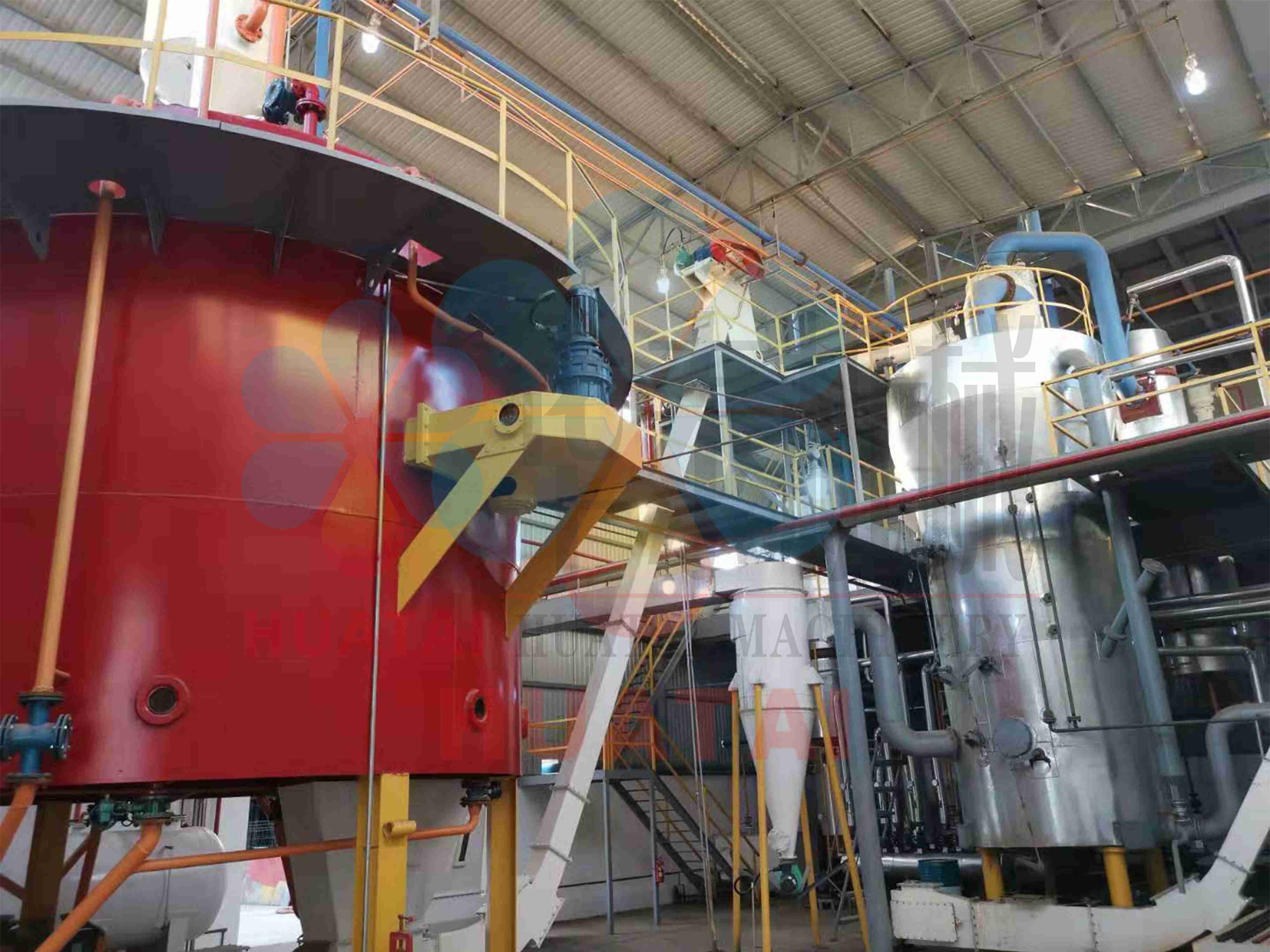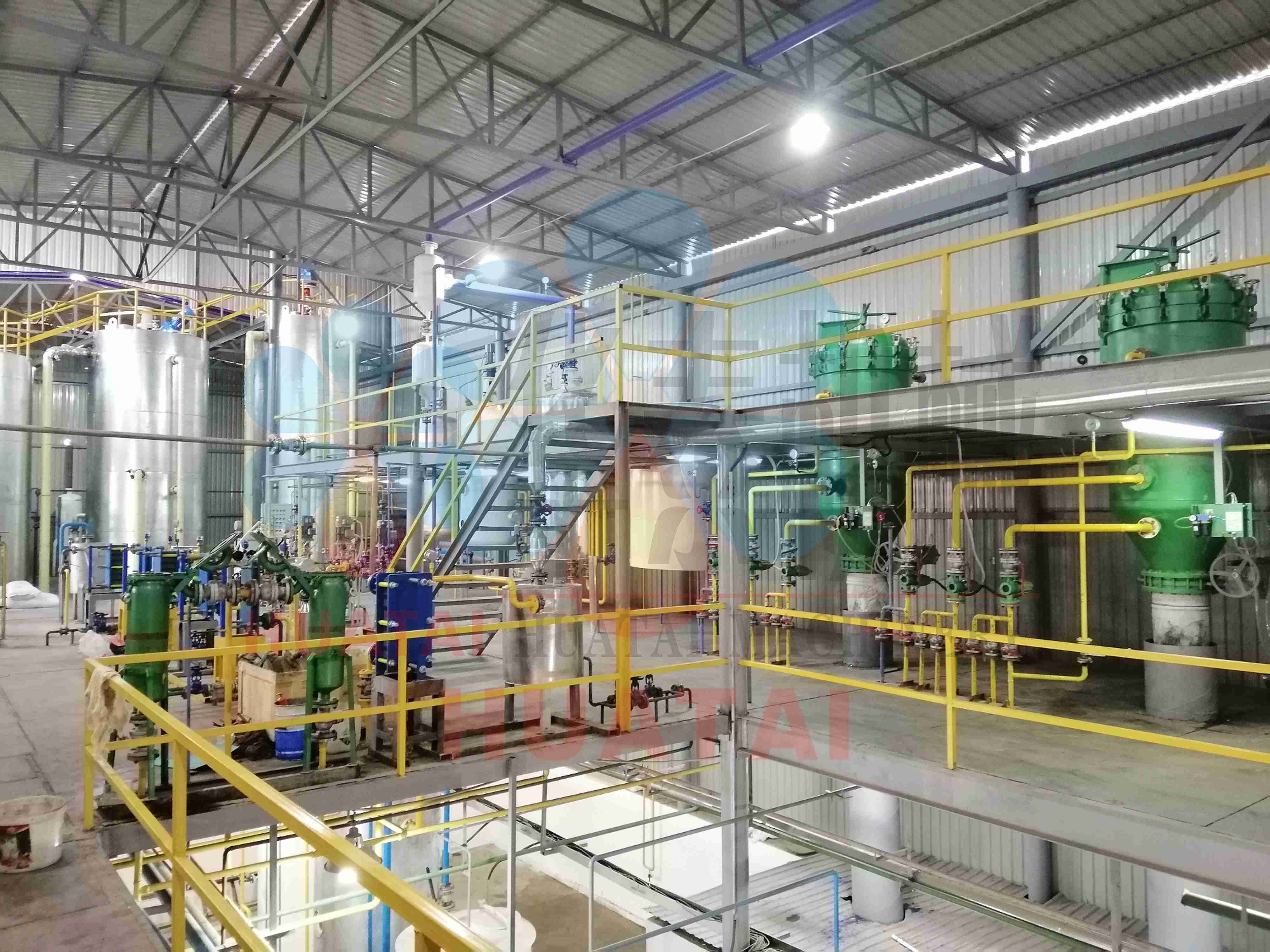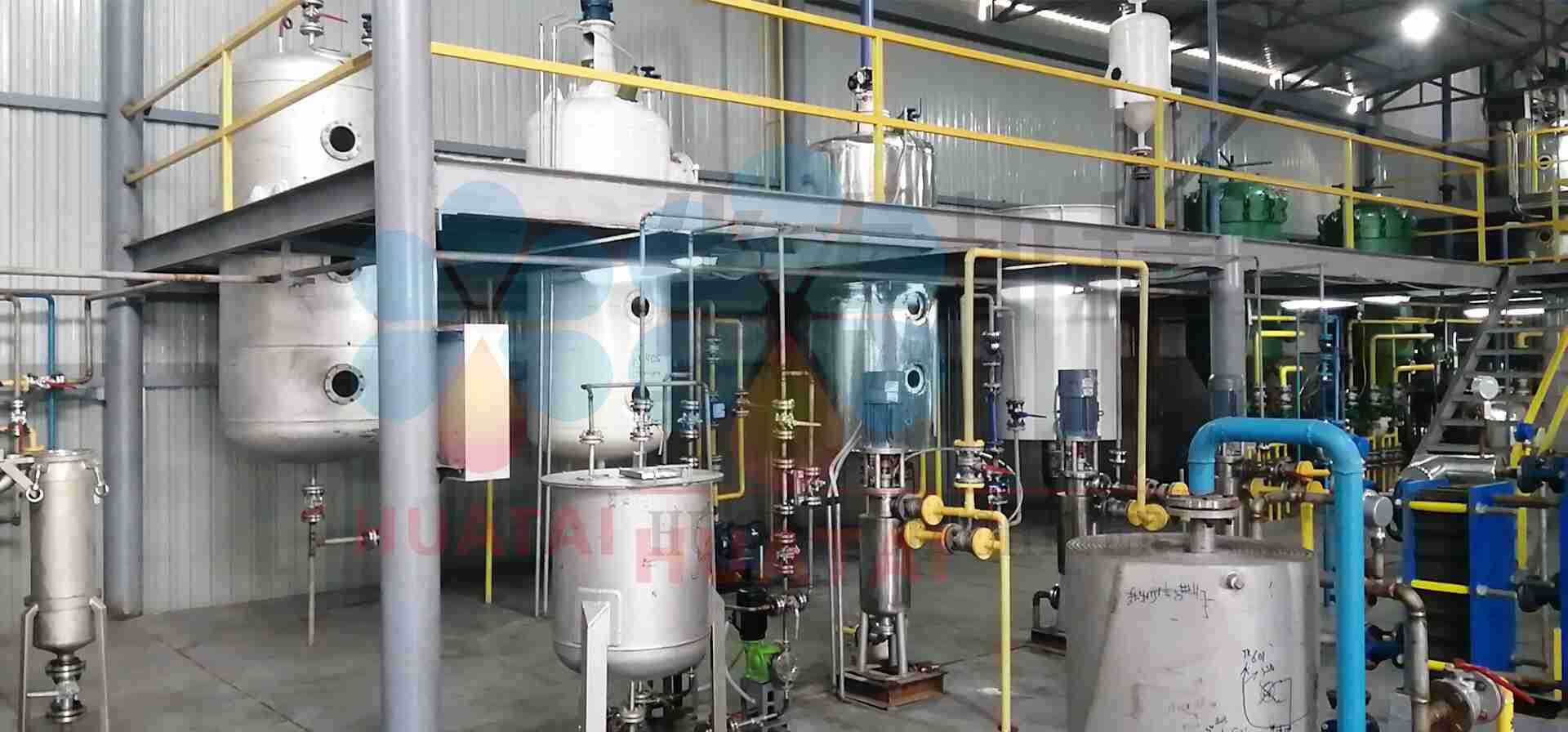Sunflower seed oil extraction removes most of the oil from sunflower seed cake. After extraction, the residual oil rate in the sunflower seed cake is below 1%, which increases the yield of sunflower oil and reduces oil loss. However, the extracted sunflower oil contains various impurities such as colloidal substances, free fatty acids, pigments, and odor compounds. To improve the quality of the oil, it must be transported to the refining workshop for further processing.

The colloidal impurities in sunflower seed oil affect its stability and the efficiency of the refining process. These impurities can cause emulsification during alkali refining, increasing operational difficulties, raising oil and alkali losses, and lowering the quality of soapstock. During the decolorization process, colloidal impurities also increase the consumption of adsorbents and reduce the effectiveness of decolorization.
The common method used in refining for degumming is water degumming. This process relies on the hydrophilic nature of colloidal impurities, primarily phospholipids. By adding hot water to the oil, these impurities absorb water, coagulate, and separate from the oil due to differences in density.
The purpose of deacidification is to remove free fatty acids from sunflower seed oil. The presence of free fatty acids depends on factors like seed maturity, seed damage, and storage conditions. High moisture levels can cause an increase in free fatty acids, leading to reduced oil quality and worsening its edible properties.
The most commonly used deacidification method is alkali refining, where alkaline solutions neutralize free fatty acids to form sodium salts. These salts precipitate as flocculent substances and remove various impurities, including proteins, mucilage, pigments, phospholipids, and hydroxyl- or phenol-containing compounds.

Sunflower seed oil contains complex pigment components, such as chlorophyll, carotenoids, flavonoids, anthocyanins, sugars, and proteins. The most common decolorization method is adsorption decolorization, which utilizes adsorbents such as activated clay to remove pigments and other impurities.
After deacidification and decolorization, the oil may still contain traces of aldehydes, ketones, hydrocarbons, low molecular weight fats, oxidized glycerol, and residual solvents. The deodorization process removes these odor compounds by injecting high-temperature direct steam, using differences in volatility to separate unwanted substances.
Wax content in sunflower seed oil affects its flavor and texture, necessitating dewaxing through methods such as crystallization or surface-active agent treatment.

The extracted "crude oil" is a mixture of organic solvents and oil, making it unsuitable for consumption. After undergoing refining processes like degumming, deacidification, dehydration, decolorization, deodorization, and dewaxing, it becomes suitable for human consumption.
Huatai Oil Machinery provides good quality oil mill plant, time & fast delivery, perfect after-sale services, and reasonable price, contact us!
Website: https://www.huataioilmachine.com/Copyright @ Henan Huatai Cereals And Oils Machinery Co.,Ltd.
Contact us now